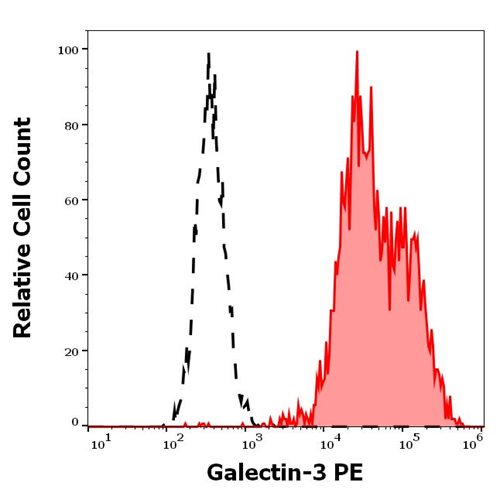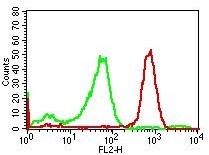Monoclonal Antibody to MBD1 (Clone: ABM15H2)

Fig-1: Western blot analysis of MBD1. Anti-MBD1 antibody (Clone: ABM15H2) was used at 2 µg/ml on HepG2, MCF7 and A431 lysates.
Roll over image to zoom in
Shipping Info:
Order now and get it on Friday April 25, 2025
Same day delivery FREE on San Diego area orders placed by 1.00 PM
| Format : | Purified |
| Amount : | 100 µg |
| Isotype : | Mouse IgG1 Kappa |
| Purification : | Protein G Chromatography |
| Content : | 25 µg in 50 µl/100 µg in 200 µl PBS containing 0.05% BSA and 0.05% sodium azide. Sodium azide is highly toxic. |
| Storage condition : | Store the antibody at 4°C, stable for 6 months. For long-term storage, store at -20°C. Avoid repeated freeze and thaw cycles. |
MBD1 (Methyl-CpG-Binding Domain Protein 1) protein is a primary candidate for the readout of DNA methylation as it recruits chromatin remodelers, histone deacetylases and methylases to methylated DNA associated with gene repression. This protein, a member of a transcriptional repressor family MBD, is predominantly expressed in neurons. MBD protein binding requires both functional MBD domains and methyl-CpGs; however, some MBD proteins also bind unmethylated DNA and active regulatory regions via alternative regulatory domains or interaction with the NuRD/Mi-2 (Nucleosome Remodeling Deacetylase) complex members. The CXXC3 domain of MBD1 makes it a unique member of the MBD family due to its affinity to unmethylated DNA. MBD1 acts as an epigenetic regulator via different mechanisms, such as the formation of the MCAF1/MBD1/SETDB1 complex or the MBD1-HDAC3 complex. It also plays an important role in disease progression, contributes to the drug resistance of PC cells; however, the mechanism underlying the drug resistance endowed by MBD1 remains unknown.
Western blot analysis: 2-4 µg/ml, Immunohistochemical analysis: 5 µg/ml, Facs analysis:.0.5-1 µg/10^6 Cells
For Research Use Only. Not for use in diagnostic/therapeutics procedures.
| Subcellular location: | Nucleus, Nucleus matrix, Nucleus speckle, Chromosome |
| Post transnational modification: | Sumoylated with SUMO1 by PIAS1 and PIAS3. Sumoylation affects transcriptional silencing by preventing the interaction with SETDB1. In contrast, sumoylation may increase interaction with AFT7IP. |
| Tissue Specificity: | Widely expressed. |
| BioGrid: | 110322. 30 interactions. |
|
There are currently no product reviews
|





















.png)











